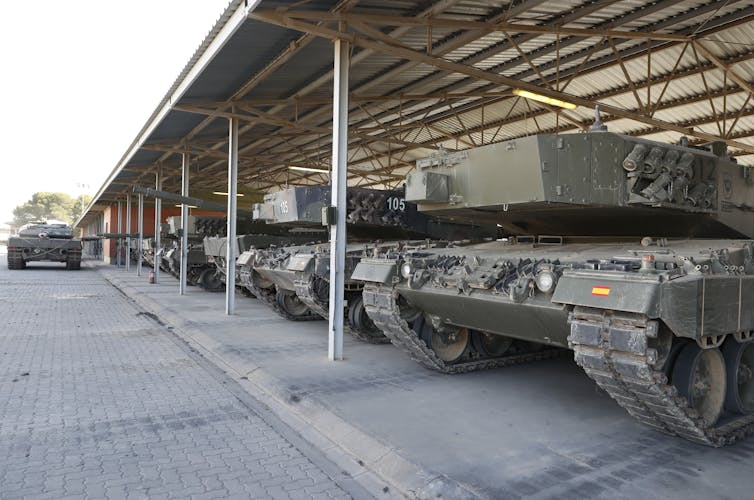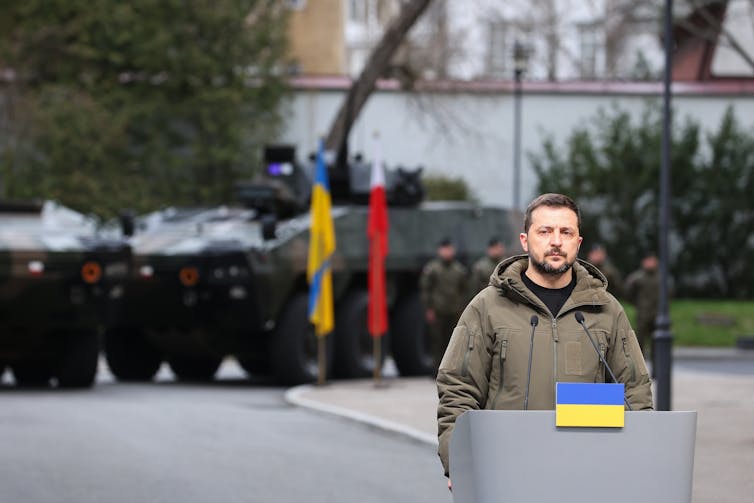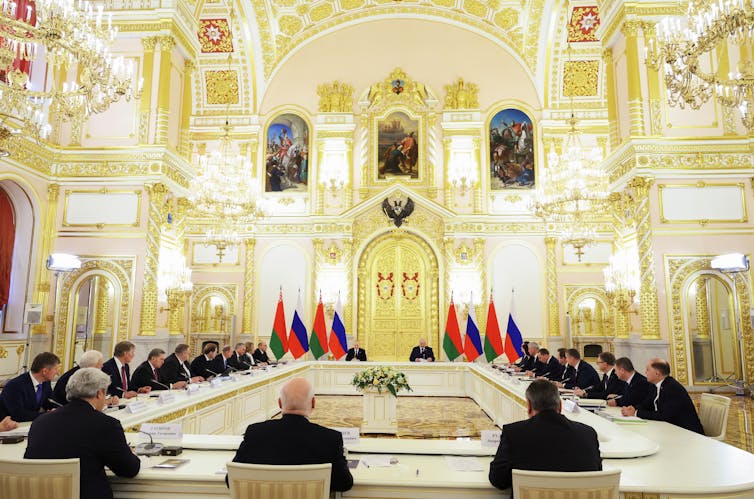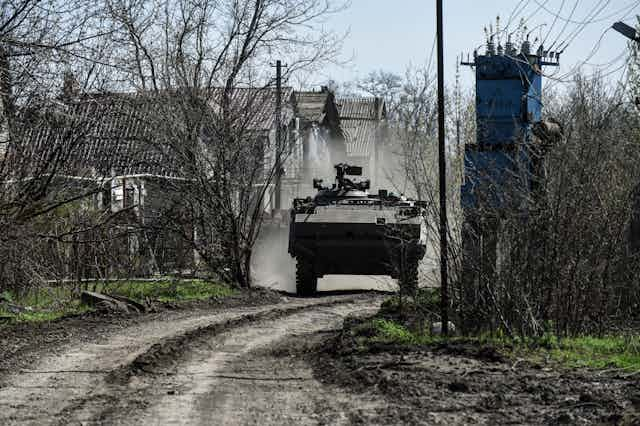Classified Pentagon documents leaked last week paint a grim picture of the trajectory of the war in Ukraine. While it may well be the most significant national security breach since the Snowden leaks of US National Security Agency material a decade ago, the fact that the leak occurred is almost certainly more significant than what was revealed about Ukraine.
The leak reveals how apparently easy it was for a low-level employee on a US military base to obtain and then share highly sensitive US government information. By comparison, the contents of the documents on Ukraine leaked are far less explosive in nature – they mostly confirm existing battlefield assessments that cast doubt, in the eyes of US intelligence officials, on any major breakthroughs in a widely expected Ukrainian spring offensive.
The key shortfalls on the Ukrainian side – artillery pieces and munitions, as well as air defences – have been well known for some time. What has also been obvious for some time, and was reconfirmed in some of the leaked documents, is that Ukraine has been mostly relying on Soviet-era artillery equipment and stocks of ammunition have begun to run dry.
At the same time, western equipment has been slow to be delivered and training of Ukrainian forces has taken time. And the western capacity to produce shells in excess of current Ukrainian consumption has yet to be built.

Add to that delays in training and equipping the troops needed for a counter-offensive and the likelihood of well-entrenched Russian defences. The low expectations of at best modest territorial gains in a Ukrainian spring offensive do not come as a surprise.
The equally limited gains that Russia has made over the past several months of its offensive, including around the still contested city of Bakhmut should serve as an indication of what is and is not possible after more than a year of war. Similarly, the protracted battle over Soledar back in January this year already gave a glimpse at how costly even minimal and strategically insignificant gains in this war have become.
Read more: Ukraine war: the bloody battle for Soledar and what it tells us about the future of the conflict
The flipside of the US assessment that any Ukrainian counter-offensive is unlikely to constitute a turning point in the war is that the fighting is likely to continue beyond this year. In some estimates it could last well beyond that.
There are no signs that either side is willing to give up. US estimates of casualties – among the leaks from the Pentagon – indicate more than 40,000 Russian soldiers killed in action over the past year and an additional 180,000 wounded. On the Ukrainian side, the figures are lower – with 17,500 likely dead and 113,500 wounded troops – but still significant. Both countries now have tightened conscription rules and procedures in another sign that they are readying themselves for intensifying battles.
Equally important from a Ukrainian perspective is continuing support from its western partners. Despite the logistical difficulties of ramping up defence industry outputs and deliveries to Ukraine, there is no indication that supplies will fall critically short and expose Ukraine to the risk of major battlefield defeats. This is partly because Moscow also cannot muster the superior military capabilities that would be needed for inflicting such defeats on Kyiv.

Continuing stalemate
So the strategic stalemate on the ground that was established at the end of last year when Ukraine’s counter-offensive ended is likely to continue. Neither side can expect, at least not for the time being, to gain a decisive advantage.
Russia, according to some of the leaked documents, has failed to secure significant foreign military aid. Moscow therefore needs to rely on a resurgent domestic defence industry that will take time to deliver. Military production will continue to be hampered by critical shortages, especially of high-end semi-conductors, that its key ally China has so far been unable and unwilling to supply.

Russia’s own military capabilities, however, will increase over time. The country has vast resources, including manpower. Its economy has been weakened but not mortally wounded. And Putin appears to be no less in control of the country and its security apparatus, which allows him to suppress even the slightest domestic opposition and control the narrative of the war that sustains him in power.
These growing Russian capabilities, however, can and will be matched by Ukraine and its western partners. While there may be some uncertainty over the outcome and impact of the 2024 presidential elections in the US, Ukraine continues to enjoy strong bipartisan support in the US Congress and among the American public. Europe may not be fully aligned with the US over China, but there can be little doubt that the west is united in its support for Ukraine.
Ultimately, both sides are likely to match each other’s increases in capability over time and the current stalemate will continue, albeit at a higher level of mutual attrition. And each increase in capability, however slight, will boost the conviction that this war remains winnable.
The Pentagon leaks have cast doubt on such assumptions, but also confirmed that neither Washington nor Kyiv are contemplating losing the war on the battlefield or the negotiation table. Time will tell whether this is a sustainable objective – and at what cost.

